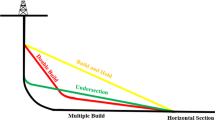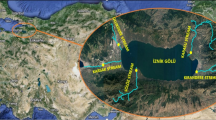Abstract
The present study develops a novel form of optimization framework to assess environmental flow in the reservoirs in which upstream and downstream river ecosystems and the lake ecosystem are assessed simultaneously. Physical habitat simulation was applied to compute ecological suitability in the river ecosystems for the fish habitats. Moreover, an adaptive neuro fuzzy inference system was utilized to simulate normalized population of the fish in the reservoir ecosystem. The ecological models were used in the structure of the reservoir operation optimization. Different measurement indices were used in the system performance measurement including reliability index, vulnerability index and root means square error. Three evolutionary algorithms were applied to optimize release including particle swarm optimization, biogeography-based optimization, and differential evolution algorithm. Based on the results in the case study, particle swarm optimization was the best algorithm to optimize ecological flow of the reservoir. The average physical habitat loss at upstream rivers as well as downstream river is less than 20%, which implies the proposed method is robust in terms of ecological flow assessment in rivers. Furthermore, normalized population in the lake is more than 50% that demonstrates the capability of the proposed method to balance ecological needs in the river and lake ecosystems.







Similar content being viewed by others
Availability of data and materials
Some or all data and materials that support the findings of this study are available from the corresponding author upon reasonable request.
References
Afshar A, Haddad OB, Mariño MA, Adams BJ (2007) Honey-bee mating optimization (HBMO) algorithm for optimal reservoir operation. J Franklin Inst 344(5):452–462
Ahmad A, El-Shafie A, Razali SFM, Mohamad ZS (2014) Reservoir optimization in water resources: a review. Water Resour Manage 28(11):3391–3405
Al-Jawad JY, Alsaffar HM, Bertram D, Kalin RM (2019) Optimum socio-ecological flows approach for reservoir operation strategy using many-objectives evolutionary optimization algorithm. Sci Total Environ 651:1877–1891
Arthington AH, Kennen JG, Stein ED, Webb JA (2018) Recent advances in ecological flows science and water management—Innovation in the Anthropocene. Freshw Biol 63(8):1022–1034
Arunkumar R, Jothiprakash V (2012) Optimal reservoir operation for hydropower generation using non-linear programming model. J Institution Eng (India): Ser A 93(2):111–120
Bahrami M, Bozorg-Haddad O, Chu X (2018) Application of cat swarm optimization algorithm for optimal reservoir operation. Journal of Irrigation and Drainage Engineering, 144(1), p.04017057
Barbarossa V, Schmitt RJ, Huijbregts MA, Zarfl C, King H, Schipper AM (2020) Impacts of current and future large dams on the geographic range connectivity of freshwater fish worldwide. Proceedings of the National Academy of Sciences, 117(7), pp.3648–3655
Canter LW (2018) Ecological impact of water resource projects. CRC Press
Eberhart R, Kennedy J (1995) October. A new optimizer using particle swarm theory. In MHS’95. Proceedings of the Sixth International Symposium on Micro Machine and Human Science (pp. 39–43). Ieee
Ehteram M, Karami H, Mousavi SF, El-Shafie A, Amini Z (2017) Optimizing dam and reservoirs operation based model utilizing shark algorithm approach. Knowl Based Syst 122:26–38
Garousi-Nejad I, Bozorg-Haddad O, Loáiciga HA, Mariño MA (2016) Application of the firefly algorithm to optimal operation of reservoirs with the purpose of irrigation supply and hydropower production. Journal of Irrigation and Drainage Engineering, 142(10), p.04016041
Godinho F, Costa S, Pinheiro P, Reis F, Pinheiro A (2014) Integrated procedure for ecological flow assessment in rivers. Ecol Processes 1(2):137–147
Harby A, Baptist M, Dunbar MJ, Schmutz S (2004) March. State-of-the-art in data sampling, modelling analysis and applications of river habitat modelling. In COST Action 626:1–313
Huang C, Zhao J, Wang Z, Shang W (2016) Optimal hedging rules for two-objective reservoir operation: balancing water supply and ecological flow. Journal of Water Resources Planning and Management, 142(12), p.04016053
Jahandideh-Tehrani M, Bozorg-Haddad O, Loáiciga HA (2019) Application of non-animal–inspired evolutionary algorithms to reservoir operation: an overview. Ecol Monit Assess 191(7):1–21
Jowett IG, Duncan MJ (2012) Effectiveness of 1D and 2D hydraulic models for instream habitat analysis in a braided river. Ecol Eng 48:92–100
Ajudiya B, Yadav SM, Majumdar PK (2021) Optimization of cropping patterns in the command area of multiple reservoir system using TLBO algorithm.ISH Journal of Hydraulic Engineering, pp.1–10
Li J, Huang J, Liang P, Lund JR (2021) Fuzzy Representation of Ecological Flow in Multi-Objective Risk Analysis of Reservoir Operation. Water Resour Manage 35(9):2845–2861
Lin F, Chen X, Yao H (2017) Evaluating the use of Nash-Sutcliffe efficiency coefficient in goodness-of-fit measures for daily runoff simulation with SWAT. Journal of Hydrologic Engineering, 22(11), p.05017023
Mansouri A, Aminnejad B, Ahmadi H (2018) Introducing modified version of penguins search optimization algorithm (PeSOA) and its application in optimal operation of reservoir systems. Water Sci Technology: Water Supply 18(4):1484–1496
Milhous RT, Waddle TJ (2012) Physical Habitat Simulation (PHABSIM) software for windows (v. 1.5. 1). Fort Collins, CO: USGS Fort Collins Science Center
Nikghalb S, Shokoohi A, Singh VP, Yu R (2016) Ecological regime versus minimum ecological flow: comparison of results for a river in a semi Mediterranean region. Water Resour Manage 30(13):4969–4984
Noack M, Schneider M, Wieprecht S (2013) The Habitat Modelling System CASiMiR: A Multivariate Fuzzy-Approach and its Applications. Ecohydraulics: an integrated approach, pp.75–91
Pastor AV, Ludwig F, Biemans H, Hoff H, Kabat P (2014) Accounting for ecological flow requirements in global water assessments. Hydrol Earth Syst Sci 18(12):5041–5059
Qin AK, Huang VL, Suganthan PN (2008) Differential evolution algorithm with strategy adaptation for global numerical optimization. IEEE Trans Evol Comput 13(2):398–417
Rini DP, Shamsuddin SM, Yuhaniz SS (2016) Particle swarm optimization for ANFIS interpretability and accuracy. Soft Comput 20(1):251–262
Sedighkia M, Abdoli A, Datta B (2021) Optimizing monthly ecological flow regime by a coupled fuzzy physical habitat simulation–genetic algorithm method.Environment Systems and Decisions, pp.1–12
Sedighkia M, Ayyoubzadeh SA, Haji Esmaeili M (2017) Habitat simulation technique as a powerful tool for instream flow needs assessment and river ecosystem management. Ecol Energy Economic Res 1(2):171–182
ShahiriParsa A, Noori M, Heydari M, Othman F, Qaderi K (2015) Introduction to linear programming as a popular tool in optimal reservoir operation, a review. Adv Ecol Biology 9(3):906–917
Simon D (2008) Biogeography-based optimization. IEEE Trans Evol Comput 12(6):702–713
Steven F., Railsback (2016) Why It Is Time to Put PHABSIM Out to Pasture. Fisheries 41(12) 720–725 https://doi.org/10.1080/03632415.2016.1245991
Xu G, Ma GW, Liang WH, Chen JC, Wu SY (2005) Application of ant colony algorithm to reservoir optimal operation. Advances in Water Science, 16(3), p.397
Yin XA, Yang ZF, Petts GE (2012) Optimizing ecological flows below dams. River Res Appl 28(6):703–716
Yoo JH (2009) Maximization of hydropower generation through the application of a linear programming model. J Hydrol 376(1–2):182–187
Funding
The authors declare that no funds, grants, or other support were received during the preparation of this manuscript.
Author information
Authors and Affiliations
Contributions
MS is responsible for writing of the manuscript and related programming and calculations. AA is responsible for field studies and reviewing the research work.
Corresponding author
Ethics declarations
Ethical approval
Not applicable.
Consent to participate
Not applicable.
Consent to Publish
Not applicable.
Conflict of interest
The authors have no relevant financial or non-financial interests to disclose.
Additional information
Publisher’s note
Springer Nature remains neutral with regard to jurisdictional claims in published maps and institutional affiliations.
Rights and permissions
About this article
Cite this article
Sedighkia, M., Abdoli, A. Optimizing environmental flow regime by integrating river and reservoir ecosystems. Water Resour Manage 36, 2079–2094 (2022). https://doi.org/10.1007/s11269-022-03131-2
Received:
Accepted:
Published:
Issue Date:
DOI: https://doi.org/10.1007/s11269-022-03131-2




